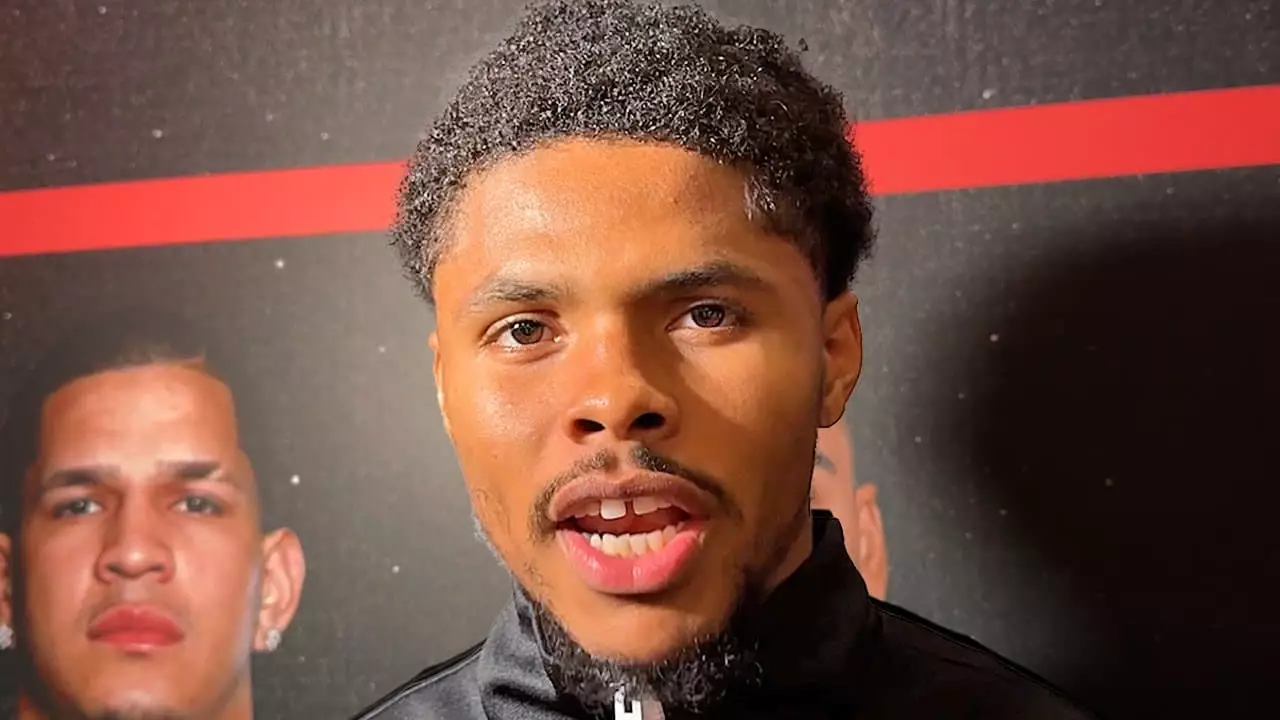Shakur Stevenson, often celebrated for his slick boxing style, is at a crossroads that reveals the core of what it means to be a true champion. His confidence is palpable as he prepares to defend his WBC lightweight title against William Zepeda. But beneath the bravado lies a fundamental question: can his defensive, movement-based approach withstand the relentless volume punching of an opponent like Zepeda? Many fans and critics fall into the trap of equating style with substance, but real greatness is built on adaptation, resilience, and mental toughness. Stevenson’s reliance on his elusive movement, while a hallmark of his persona, may be insufficient against the relentless pressure Zepeda brings.
His declaration to “fight his fight” sounds bold, but it also exposes a potential strategic vulnerability. The style that works against opponents who lack volume or offensive intent may falter when faced with someone who presses relentlessly, throwing punches in waves. What’s more concerning is the assertion that he can “step up” under pressure, which hints at a mental fortitude that has yet to be tested thoroughly against a fighter like Zepeda. It’s easy to be confident when you’re ahead, but the true test of a champion finds its home in adversity.
The Myth of the “Easy Win” and the Power of Underestimated Foes
There’s a dangerous narrative floating around that Zepeda might be an easier challenge for Stevenson, especially considering his impressive unbeaten record. However, dismissing Zepeda’s power and volume is a classic mistake rooted in underestimating the fighter’s ability to disrupt even the most technical opponents. Zepeda’s 27 knockouts in 33 victories underscore a dangerous blend of aggression and skill, and history shows that movers often struggle against volume punchers with the stamina to keep coming forward.
The narrative players cling to—comparing Zepeda to fighters like Hector Tanajara or Mercito Gesta—is superficial at best. While Stevenson’s management might have chosen less daunting opponents like Yoshino or Harutyunyan to build a record, stepping into the ring with Zepeda demands a different set of skills and mental preparation. Underestimating such a fighter risks an abrupt and humiliating awakening.
Forging a Legacy Beyond Comfort Zones
Stevenson’s insistence on maintaining his movement-based style suggests a reluctance to evolve beyond his comfort zone. It reveals a strategic conservatism — a desire to preserve his record and reputation rather than embracing the chaos and grit required of true greatness. His comment about not fighting in the pocket against Zepeda because he might get knocked out is telling. It emphasizes a survival mentality over an aggressive pursuit of victory, which may be adequate for a practitioner of a perfect boxing style but insufficient for a truly legendary fighter.
The truth is, boxing champions are often forged in the fire of adversity. The fighters who emerge from moments of doubt with resilience and adaptability seize true greatness. Stevenson’s current approach risks being a castle built on a fragile foundation of movement rather than a fortress fortified by true toughness and power.
What It Takes to Define a Champion’s Destiny
Looking beyond pre-fight bravado, the real issue lies in the kind of fighter Stevenson aspires to be. His limited power and vulnerability to body shots, coupled with a reliance on reflexes rather than robustness, paint a picture of a fighter who might excel in highlight reels but falters in decisive moments. His past performances against fighters like Josh Padley and Artem Harutyunyan highlighted his limitations when pressed physically.
A true champion must transcend style and adapt under fire. They must be willing to trade punches, endure discomfort, and demonstrate the kind of toughness that makes opponents reconsider their game plan. Stevenson’s apparent reluctance to engage in these gritty exchanges could cost him dearly once he faces someone with the volume and stamina of Zepeda.
Ultimately, success in boxing isn’t about avoiding trouble or sticking rigidly to a preferred style. It’s about evolving, understanding vulnerabilities, and being willing to fight in the trenches. Stevenson has the talent, but whether he possesses the heart and adaptability to reach the upper echelons of the sport remains an open question. His upcoming fight is not just about defending a title, but about deciding what kind of legacy he wants to leave—one built on finesse or resilience.

